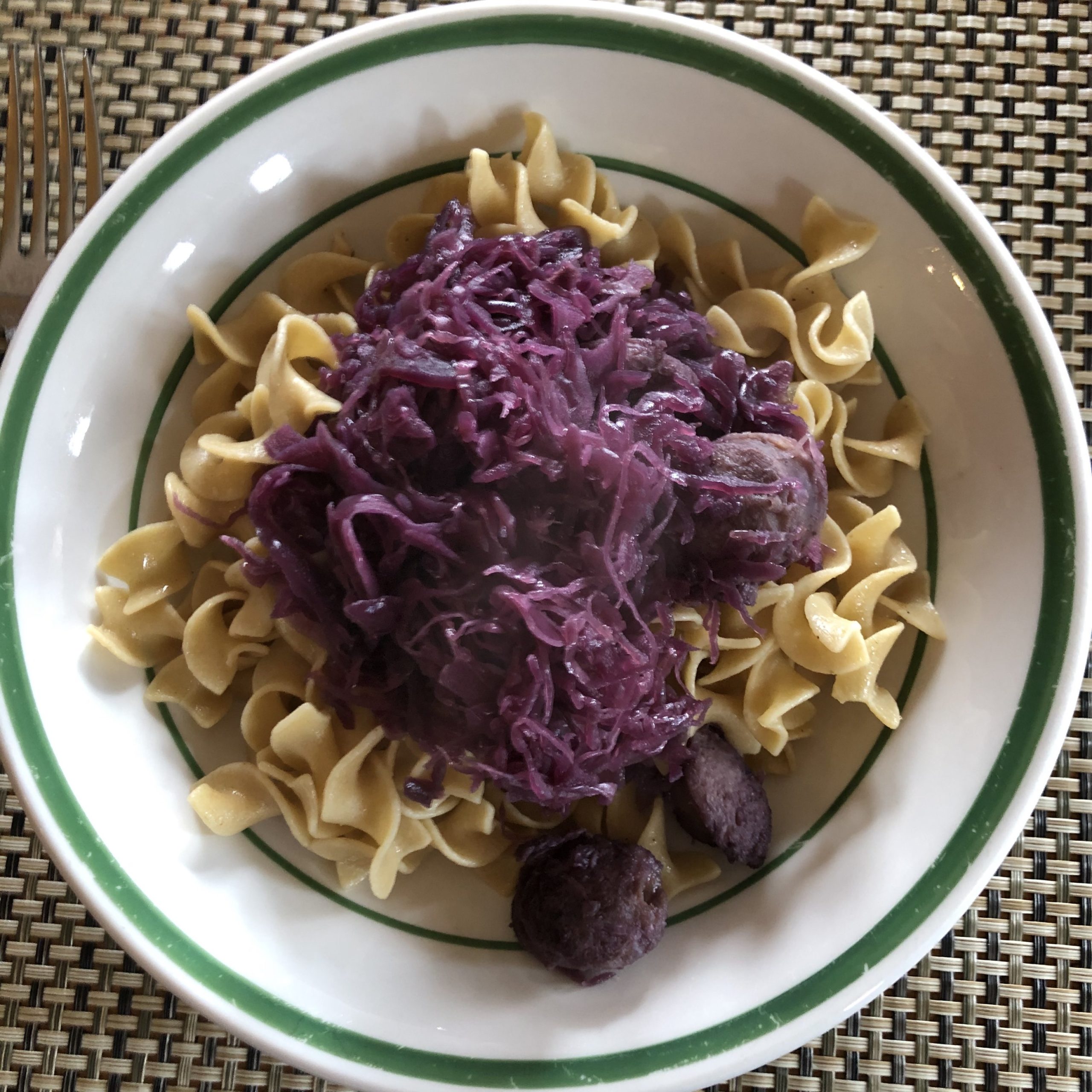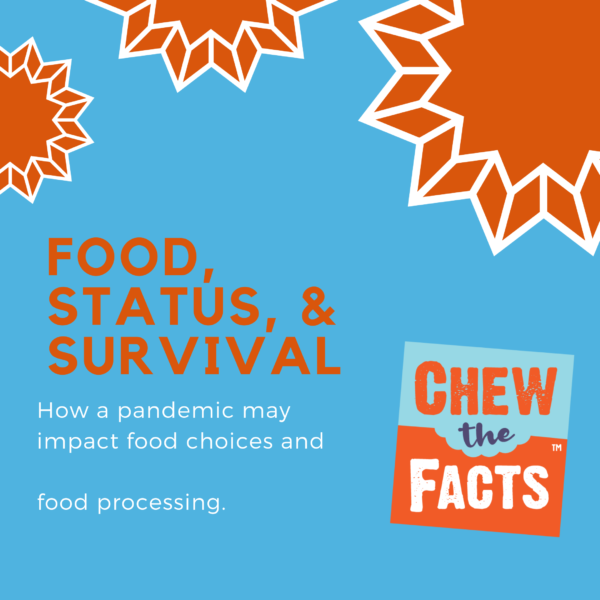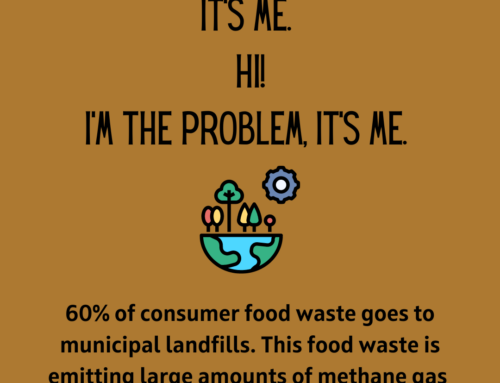We are experiencing a lot of disruption in the world right now. The food supply chain is mostly doing well, although recently there have been some disruptions and issues surrounding food waste. It’s been interesting to consider how this pandemic and time of crisis is influencing people’s food choices and attitudes.
People are grocery shopping more than eating out. Shoppers may be thinking about “processed food” differently as they shop for more shelf-stable items. Food waste and food insecurity problems have been highlighted. There are new concerns about how to wash produce and handle groceries.
How may all of these changes impact the food landscape of the future?
Diet Wars
Over the past several years, there’s been a bit of a “diet war” going on over what sort of food, or which diet, is the healthiest. Some camps swear by high protein and low (or no) carb. Others swear by “whole foods”, and shun processed food, in an attempt to “eat clean”.
During a pandemic, does any of that really matter?
A healthy diet can be achieved in multiple ways. Basic foods are making a come back, yet Keith Ayoob, registered dietitian and Associate Clinical Professor at the Albert Einstein College of Medicine in New York City, isn’t convinced the pandemic will have lasting effects on the draw of fad diets. He says, “Fad diets will emerge endlessly and always will be seductive to people, promising fast results, including weight loss”. In his opinion, no diet can, or should, be sustained unless it’s balanced and also accommodates individual food preferences.
“DASH and Mediterranean eating styles do both, and they’re both grounded in solid science and accommodate any cuisine, any eating style, including vegetarian,” says Ayoob.
Certainly one of the strengths of these dietary plans is that they include a wide variety of affordable foods. In terms of hitting your DASH fruit and veggie goals – it’s totally okay if some of them are canned, jarred or frozen.

Jarred sweet and sour cabbage with noodles and chicken sausage makes a satisfying meal for about $2.00 per serving.
Food Choices in the time of Coronavirus
With restaurants closed only to take-out, people are eating a lot more food at home and doing more grocery shopping. Many people are limiting how often they can pick up food prepared from restaurants, whether due to the logistics of going out, or limited budgets as a result of job loss. Grocery shopping lists have likely changed too.
My parents were children of the Great Depression. When I was growing up, we often would have a meatless meal once a week. My mother didn’t do this because it was trendy. She did it because it was economical and fit the food budget. She marveled that dishes such as polenta or pasta cici, became trendy around the turn of the century, as she grew up viewing them as “peasant food”. Maybe we are circling back to valuing these simple, inexpensive dishes again.
If you’re spending some time online you can’t miss the food photos and videos. Cooking videos and home kitchen social media posts are more present than ever. In addition, you may be rethinking how to stock your pantry and create simple at-home meals from those staple items. You’ve likely seen some people online baking bread, while others complain about snacking on too many indulgent foods. Yet there are also many invisible people – those who are food insecure.
Food Insecurity
Every day I see people promoting bad dietary advice. What irritates me the most, is when the discussion becomes somewhat of a class war. For instance, remember that LinkedIn post about cereal that I made in February that got over 130 comments? People were outraged that I promoted such a “processed and sugar-laden” food! Of course cereal is actually an affordable food. My take on ready-to-eat cereal is that it’s both nutritious and available to many people, regardless of their socioeconomic or geographic situation.
This couldn’t be more apparent now. Many people have lost their jobs, can’t pay the rent, and have a tighter food budget to get by on. Cereal is just one of those staple pantry items that are getting a lot of people through the week right now. More people are suffering due to food insecurity, more now than ever.
My colleague, Clancy Harrison, recently published a recipe guide for those who are feeling the pinch of food insecurity. Click here to download it.
According to Feeding America, nearly 40 million people and 12.5 million children in the U.S. are food insecure. 29% of people who are food insecure in the United States don’t qualify for food assistance programs because they make too… Click To TweetAccording to Feeding America, nearly 40 million people and 12.5 million children in the U.S. are food insecure. 29% of people who are food insecure in the United States don’t qualify for food assistance programs because they make too much money. This number is drastically increasing every single day due to COVID 19. – Clancy Harrison, The Food Dignity Project®

Food Trends – Processed Foods Help Feed People
I’m hoping to see consumers embrace stocking canned, frozen, and low-budget food staples (canned meats, canned beans, rice and pasta, ready-to-eat cereal, oats, cornmeal) in their kitchens. Kris Sollid Registered dietitian and Senior Director of Nutrition Communications at the International Food Information Council, agrees this would be a brilliant silver lining to this crisis.
How may this time of crisis change consumer opinions on food processing and biotechnology? “Although it is often taken for granted, or sometimes blamed for health issues, the abundance of our food supply is something to behold.”
“Think about it, even during times like these we are not experiencing chronic shortages. It’s amazing. We owe serious gratitude to all the farmers and food supply chain workers who are working through this crisis to keep us fed,” says Sollid.
Prior to this pandemic, plant-based eating had been touted as a strategy to save the environment. Many activists were shouting about how cows (both beef and dairy) are contributing widely to climate change. The plant-based trend will likely continue, but not because cows or other animal livestock is ruining the environment (clearly, it’s not the cows – as we’ve seen the atmosphere and waterways clear during world quarantines). Instead, plant-based foods will trend because of their affordable price.
Using smaller amounts of expensive meats to create a meal is one strategy. Creating more meals around affordable staples such as rice, pasta or canned beans, is another.
Misinformation about Cleaning Produce
This pandemic has also created a lot of fear and confusion about how to clean fruits and vegetables. Using soap or detergent for cleaning any food is not recommended. According to Tamika Sims, PhD, Director of Food Technology Communications, International Food Information Council, “The best way to wash produce is to first, wash your hands thoroughly before handling your foods. Then the best thing to do is use running water (cold to lukewarm) to thoroughly clean produce. For firm, thick-skinned produce (such as melons and cucumbers), FDA notes you can use a clean scrubbing brush that is specifically designated for your produce. Once all the produce is clean, you can pat it dry with a clean paper towel or napkin. Then, wash your hands once more before you eat”. The CDC recommends at least 20 seconds of thorough scrubbing with water and soap.
Also, says Sims, to reduce risk of food-borne illness “when picking produce in the store, aim to avoid those that are bruise. Bruised produce can potentially harbor microbial contaminants inside of the fruit or vegetables and can be hard to eliminate.”
Post-Coronavirus Food Choices
What will food processing and technology look like in the future? Future trends in food processing may differ from those before coronavirus. “I didn’t fully appreciate the potential or value of 3D printing of food at home.” Sollid now sees this through a different, post-pandemic, lens. He suggests that this time in history may be an inflection point for the demand and innovation of in home-based food printing appliances.
As an optimist, I hope this pandemic will create positive outcomes. Problems in the food supply chain will create new solutions and emergency operation plans. New outlets for getting food to those who need it are being created. Perhaps some people will pivot from viewing cooking and home economics as an old-fashioned skill, to viewing it as an important survival skill.
As you evaluate your health habits, hopefully you’ll come to new realizations. Diet and exercise and following doctor’s orders, really are important. As is adopting good hygiene.
Let’s hope the glass stays half full and we move forward into the future.




